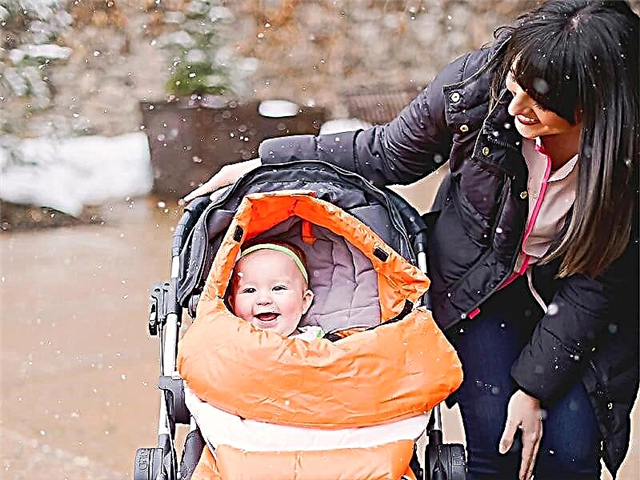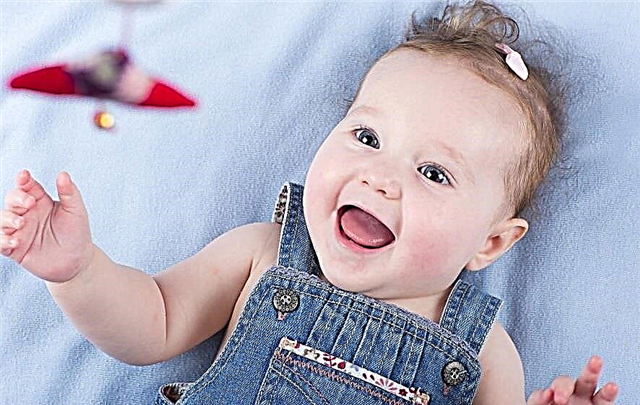A little information
An isolated enlargement of the pharyngeal tonsil without signs of inflammation occurs in no more than 15-20% of cases.
The pharyngeal tonsil is located in the nasopharynx, along its back wall. You can see it only by armed with special instruments (a mirror, an endoscope, for example) or by performing special research methods: CT or x-ray of the nasopharynx in the lateral projection, feeling it with your fingers. This is the doctor's task. But certain symptoms can point parents to a potential problem.
So, if the child is constantly:
- breathes through the mouth;
- snores during sleep;
- has an incorrect bite;
- speaks badly after three years or speaks "in the nose", you should definitely contact your otorhinolaryngologist.
In medical circles, two equivalent terms are common - the pharyngeal or nasopharyngeal tonsil and they denote the accumulation of lymphoid tissue on the back wall of the human nasopharynx.
The reasons for the increase in adenoids in children. Degrees
The pharyngeal tonsil, being an immune organ, along with other lymphoid organs, provides protection against infections surrounding the child's body.
Together with the lingual and palatine tonsils, tubal ridges and lymphoid tissue of the posterior pharyngeal wall, the pharyngeal tonsil forms the Pirogov-Valdeyer lymphoid ring. This set of tissues is of great importance in the antiviral and antibacterial protection of the child's body. Especially in the first 5 years of life.
A newborn child daily encounters many microorganisms, gets to know them, learns to live without the protective antibodies of the mother's body. And if the first 2-3 years children rarely encounter carriers of infections, then with the start of visiting a preschool institution everything changes. Kindergartens are crowded, often lacking hygiene, dry and hot air. Pupils actively exchange microflora, and more often - not useful.
The main causative agents of "children's" infections enter the body through the respiratory tract, and there they are met by the "first legion" - peripheral lymphoid tissue: the pharyngeal and palatine tonsils. Frequent encounters with pathogens provoke the immune organs to work harder. And then everything is simple, whoever works a lot grows: muscle tissue grows in response to contraction, the brain grows from intense mental stress, the lungs increase in response to deep and rapid breathing, etc.
Depending on the size of the pharyngeal tonsil in relation to one of the bones of the nasal septum (vomer), according to the new classification, 4 degrees of enlargement of the adenoids are distinguished:
- I degree - the opener is covered by 1/3;
- II degree - the opener is covered by ½;
- III degree - the opener is covered by 2/3;
- IV degree - the opener cannot be inspected, the nasopharyngeal cavity is completely filled with lymphoid tissue.

To whom and when is the operation indicated?
What if, nevertheless, the diagnosis “n-th degree adenoids” appeared in the child's outpatient card? Really delete immediately? Don't jump to conclusions. After all, an increase in the nasopharyngeal tonsil is a physiological condition for children in the first 5-6 years of life. This should be the case for a child attending kindergarten. It's another matter if this is accompanied by complications:
- periods of sleep apnea (lack of breathing), which is the only absolute indication for the removal of adenoids;
- hearing impairment against the background of obturation (closure) of the lumen of the auditory tubes with adenoids;
- recurring purulent otitis media.
Most often, children of 3.5-5 years old become patients of an otorhinolaryngologist. But there are times when the operation is performed at an earlier age or, conversely, in adolescence.
In case of recurrent purulent or chronic mucous otitis media, accompanied by hearing loss, it is more preferable to perform a shunting of the tympanic cavities.
Preparation for surgery for adenoids in children
Removal of the adenoids is a simple operation. Previously performed on an outpatient basis and under local anesthesia. But even such a simple surgical intervention requires some preparation.
- First of all, the child must be completely healthy at the time of surgery.
- Secondly, during the month before it, there should also be no infectious diseases.
- Thirdly, all carious teeth must be sanitized.
- Fourthly, have all mandatory vaccinations (according to the vaccination schedule).
- Fifth, before the operation itself, do not have contact with infectious patients.
- At sixth, do not have contraindications from other organs and systems: respiratory, cardiovascular, nervous, genitourinary, endocrine.
What are the operations. Classification and essence
At this stage of development of otorhinolaryngology, there are a large number of different variations on the topic "removal of adenoids in children." Parents are lost amidst such diversity. But the essence of all operations comes down to one thing - to cut off excess tissue and make the lumen of the nasopharynx wider.
Even the most modern surgical method does not completely remove the pharyngeal tonsil tissue. What, moreover, is not the ultimate goal of treatment. For this reason, the term "adenoidectomy" is incorrect.
Until now, the old classical method is often used, when the adenoids are cut with a special surgical instrument - an adenotome. The cut tissue must be removed with a separate instrument. The next step is to stop bleeding. Often the operation is carried out "blindly" - the surgeon relies on his knowledge of anatomy and tactile sensations.
Today, this technique is fading into the background, giving way to surgery using high technologies. These modern interventions include:
- laser removal of adenoids implies the removal of hypertrophied tissue in the usual way, only coagulation ("cauterization") of the vessels is carried out with a laser;
- shaver adenotomy (the adenoids are cut off with a special rotating instrument, the cut tissue is removed and at the same time the blood is aspirated (aspirated));
- removal of adenoids by coblation (with the help of cold plasma, overgrown tissues are secreted, coagulation of blood vessels occurs at the same time);
- cryodestruction (high-precision action on the pharyngeal tonsil with liquid nitrogen. As a result, the tissues die off and are removed on their own).
The removed tissue is necessarily sent for histological examination, which makes it possible to assess the structural features, determine the signs of inflammation and isolate the causative microorganism. Each of the modern methods is performed under the control of endoscopic equipment and has its own pros and cons. The doctor will suggest the available options, indicating all the pros and cons. The final decision remains with the parents: where and how to operate on their child.
The method of coblation of adenoids has the best characteristics in terms of the time of surgery and the duration of postoperative bleeding. But its limited use is due to its high cost.
At what age is it best to remove adenoids?
The growth of the pharyngeal tonsil continues up to 5-6 years. It logically follows from this that the operation to reduce them is preferable to do after this age. But the presence of absolute indications for the operation forces the doctor to carry out the operation at an earlier date. In adolescence, the lymphoid tissue of the nasopharynx undergoes a reverse development - involution and, as a rule, surgical treatment in puberty is not indicated.
Pros and cons of adenotomy
Practitioners tend to be proactive, while parents prefer to wait. How to understand that the doctor wants to help, and not "throw" his patient over to the operating colleague.
Let me remind you that there is only one absolute indication for the operation - these are periods of sleep apnea (lack of breathing).
Everything else is relative indications: frequent otitis media, nasal nasal disease, maxillofacial deformities, frequent rhinosinusitis, and so on. But often these conditions have to be addressed in the operating room.
Do not perform surgery if you suspect a systemic allergy. After all, an allergic predisposition not detected in time after surgical treatment can be activated. This is often manifested by severe allergen-dependent pathology, for example, bronchial asthma or polyps in the nose. Only a painstakingly collected anamnesis and joint work of the doctor and the parents of the little patient will help to choose the right treatment plan.
What complications can there be when removing adenoids in children?
Any surgical operation is accompanied by damage to tissues and vessels feeding it. For this reason, there is always a risk of bleeding both during and after surgery. In addition, surgeons are always afraid of the addition of infection in the early postoperative period, therefore it is so important to comply with all requirements in preparation for surgical treatment. When tissue is damaged, it is rare, but adhesions still occur at the site of surgery. If the operation was performed by a qualified surgeon, and the postoperative period was unremarkable, then the risk of scar formation is minimal. If the adenoids are removed at an early age, there is a possibility of their regrowth, in which case a second operation may be necessary.
All possible complications are easily diagnosed and do not lead to irreparable consequences.
While maintaining the effect of provoking factors after surgical correction of the adenoids, compensatory hyperplasia (enlargement) of the palatine or other tonsils may occur. Therefore, it is especially important after adenotomy to minimize negative environmental factors.
What can be the result of inaction?
Often, relatives of young patients categorically refuse surgical treatment or drag out for a long time. An operation not done on time can lead to a number of negative consequences:
- Permanent hearing impairment.
- Speech defects.
- Facial deformities.
- Malocclusion.
- Chronic otitis media or rhinosinusitis.
- General underdevelopment, poor academic performance, inattention due to chronic oxygen starvation.
Rehabilitation of a child after adenotomy
On the first day or two, children may complain of a sore throat, refuse to eat. To make eating more comfortable, liquid cereals, mashed potatoes, broths, and plenty of drink are recommended. All food and drinks should be at room temperature. The general condition of children after adenotomy rarely suffers.
The child is examined by a doctor the next day after the operation, then on the 3rd and 5th days (these terms may differ in different organizations). The doctor prescribes gargling with one of the solutions: Furacillin, Chlorhexedin, Miramistin. Antiseptic agents may be prescribed locally in the nose if there are signs of inflammation of the tonsil. The first 10 days after the operation, you should not bathe the child. It is enough to limit yourself to a hygienic shower with body temperature water. At the same time, it is recommended to limit increased physical activity (sports, outdoor games).
Strict implementation of all the recommendations of the attending doctor is the key to a speedy recovery.

Tips for parents
Working directly with children and their parents on a daily basis, I regularly encounter a lack of understanding by parents of the true cause of the symptoms that have arisen. Often they present their complaints: the child snores, “grunts” his nose, swallows mucus and the like. It is always worth considering how all of the above affects the general well-being of the child, his health. If a child snores, but at the same time sleeps calmly all night, wakes up rested, does well at school, then snoring is just an acoustic reflex. But the desire to have a "perfect" child is sometimes beyond common sense.
Wanting to reduce the anxiety of many parents, I will give several simple recommendations, following which you can save a lot of nerve cells and family budget funds:
- Irrigate the nasal cavity regularly with isotonic saline solutions, especially in dry and hot air.
- Ventilate and humidify the air in the nursery.
- Take your child for a walk in the fresh air every day, even when sick.
- Be with your child less often in confined spaces with a large crowd of people.
- Do not teach your child to be sterile. Having pets, especially dogs, in the house helps to build healthy immunity.
- Starting to attend kindergarten, the child will get sick more often! You need to be ready for this.
- The first three diseases of a child in a preschool institution require certain behavior from the parents: after recovery, you should not immediately take the child to kindergarten. You should wait 3 weeks for the formation of strong immunity, and only then return the child to the children's team.
- If a child has snoring with periods of short-term respiratory arrest, this is a reason to contact an otorhinolaryngologist.
- You should be on your guard if the child has become inattentive, often asks again. This can be a symptom of poor patency of the auditory tubes and hearing loss. Do not close your eyes to this.
- Confirmed hypertrophy of the palatine tonsils means only their enlargement and does not impose the stigma of inferiority on the child. Regular observation by an otorhinolaryngologist will facilitate childhood and prevent possible complications.

Conclusion
In conclusion, let me remind you that an increase in the pharyngeal tonsil (adenoids) or even their chronic inflammation (chronic adenoiditis) is a physiological condition of childhood, especially in preschoolers. It is always necessary to evaluate the negative impact of each pathology on the general well-being of the patient and possible complications, and not to treat a formal diagnosis or, even worse, laboratory parameters and additional research data.
Dear Parents!
If your child has clear indications for the removal of adenoids, you should not look for a miracle cure for their non-surgical treatment.
To date, there is not a single drug that reduces the size of the pharyngeal tonsil. Only in the case of inflammation is it justified to use local anti-inflammatory aerosols - nasal hormones. Any homeopathic medicines only lead to a protracted course and waste of the family budget.
Literature
- Diseases of the ear, throat, nose in childhood: national guidelines: short edition / ed. M.R.Bogomilsky, V. Chistyakova.- M .: GEOTAR-Media, 2016.-544 p.: Ill.
- Palchun V. T. Otorhinolaryngology. Clinical guidelines, 2014 - 368 p.
- Shevrygin B.V. Guidelines for pediatric otorhinolaryngology.-M. The medicine. - 1985 .-- 336s.
- Zarubin, M. Treatment of diseases of the ENT organs. The newest reference book / M. Zarubin. - M .: Phoenix, 2007 .-- 240 p.
- Soldatov I.B., Gofman V. St. Petersburg. 2001 .-- S. 468.



